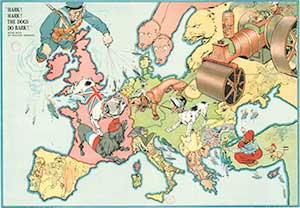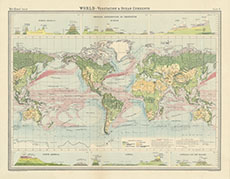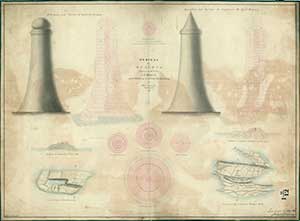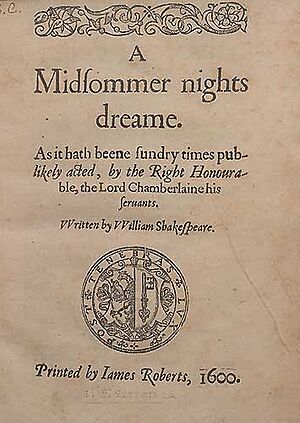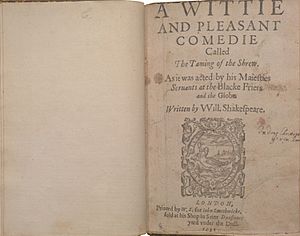National Library of Scotland facts for kids
Quick facts for kids National Library of Scotland |
|
|---|---|
 |
|
| National Library of Scotland building on George IV Bridge, Edinburgh | |
| Country | Scotland |
| Type | National library |
| Established | 1925 |
| Reference to legal mandate | National Library of Scotland Act 1925 & 2012 |
| Location | Edinburgh |
| Coordinates | 55°56′55″N 3°11′31″W / 55.948554°N 3.191899°W |
| Collection | |
| Size | 14 million printed items |
| Legal deposit | Yes, provided in law by:
|
| Access and use | |
| Access requirements | Open to anyone with a need to use the collections and services |
| Other information | |
| Budget | £15.480 million (operating budget; 2018–19) |
| Director | Amina Shah, National Librarian and Chief Executive |
| Staff | 340 |
The National Library of Scotland (NLS) is one of Scotland's most important collections of books and other items. It is one of the biggest libraries in the United Kingdom. This library is special because it is a "legal deposit" library for Scotland. This means it has the right to receive a copy of almost every book, magazine, and newspaper published in the UK and Ireland.
The library has over 24 million items. These include books, old handwritten papers, postcards, photos, and newspapers. It also has Scotland's Moving Image Archive, which holds more than 46,000 videos and films. Some amazing items in the collection are copies of the Gutenberg Bible, a letter from Charles Darwin about his book On the Origin of Species, and the last letter written by Mary, Queen of Scots. The library also has the world's largest collection of Scottish Gaelic materials.
Contents
Exploring the Library Buildings
The National Library of Scotland has several buildings where you can explore its vast collections. Each building serves a different purpose.
Main Building in Edinburgh
The library's main building is in Edinburgh city centre. It sits on George IV Bridge, between the historic Old Town and the university area. This building is very old and beautiful, listed as a Category A building.
You can often find cool exhibitions here. Past shows have explored Scotland's contributions to new ideas or celebrated famous writers. Since it's not a lending library, you can visit this building to read and study original materials in special rooms.
Reading Rooms for Research
The George IV Bridge building has different reading rooms for various types of materials:
- General Reading Room – This is where you can research using journals, newspapers, and newer books (published after 1850).
- Special Collections Reading Room – Here, you can access very old and rare items. This includes unique books and handwritten papers.
- Multimedia Room – This room is for looking at things that aren't written, like microfilms and photographs.
Causewayside Building for Storage
There is another modern building on Causewayside, in the south side of Edinburgh. It was built in the 1980s. This building holds special collections like maps and science books. It also provides a lot of extra storage space for the growing collection.
Maps Reading Room
At the Causewayside building, you'll find the Maps Reading Room. This is where visitors can look at maps, atlases, and books about maps.
Kelvin Hall for Digital Access
The newest part of the library is the Kelvin Hall public centre in Glasgow, which opened in 2016. This centre helps people access the library's digital and moving image collections. It's especially good for exploring the Moving Image Archive. Smaller exhibitions are also held here.
A Look at the Library's History
The National Library of Scotland has a long and interesting history. It started from a much older library.
From Advocates Library to National Library
Scotland's national library actually began as the Advocates Library. This library belonged to a group of lawyers called the Faculty of Advocates. It opened in 1689. In 1710, a law called the Copyright Act gave it the right to receive a copy of every book published in Great Britain. Over the years, the Advocates Library grew by buying books and receiving legal deposit copies. It became a national library in all but name.
| National Library of Scotland Act 1925 | |
|---|---|
| Act of Parliament | |

|
|
| Long title | An Act to establish a National Library in Scotland on the foundation of the Library gifted for that purpose by the Faculty of Advocates, and for purposes connected therewith. |
| Citation | 15 & 16 Geo. 5. c. 73 |
| Dates | |
| Royal assent | 7 August 1925 |
| Other legislation | |
| Repealed by | National Library of Scotland Act 2012 |
|
Status: Repealed
|
|
| Text of statute as originally enacted | |
By the 1920s, the Advocates Library found it hard to pay for the upkeep of its huge collection. A generous man named Alexander Grant, who ran the company McVitie & Price, donated a large sum of money. With his help, the library's contents were given to the nation. The National Library of Scotland was officially created by the National Library of Scotland Act 1925.
Sir Alexander Grant gave even more money for a new library building. This new building was constructed on George IV Bridge. Work started in 1938, paused during World War II, and finished in 1956.
Growing and Adapting
By the 1970s, the library needed more space for its growing collections. The Causewayside Building was opened in two stages, in 1989 and 1995. This provided much-needed extra space for working and storing items.
Since 1999, the Scottish Parliament has funded the library. It is still one of six legal deposit libraries in the UK and Ireland.
In 2009, a water pipe burst, causing some flooding in the building. A few items were slightly damaged. Also in 2009, the last letter written by Mary Queen of Scots was shown to the public for a short time.
In 2010, the library joined a project to reduce its carbon footprint. A year later, it had cut its carbon emissions by 18%.
| National Library of Scotland Act 2012 | |
|---|---|
| Act of Parliament | |

|
|
| Long title | An Act of the Scottish Parliament to make further provision about the name, functions and governance of the National Library of Scotland; and for connected purposes. |
| Citation | 2012 asp 3 |
| Dates | |
| Royal assent | 21 June 2012 |
| Commencement | 1 February 2013 |
| Other legislation | |
| Repeals/revokes | National Library of Scotland Act 1925 |
|
Status: Current legislation
|
|
| Text of the National Library of Scotland Act 2012 as in force today (including any amendments) within the United Kingdom, from legislation.gov.uk | |
| National Library of Scotland Act 2012 (Commencement) Order 2013 | |
|---|---|
| Statutory Instrument | |

|
|
| Citation | SSI 2013/1 |
| Dates | |
| Made | 8 January 2013 |
| Laid before Parliament | 10 January 2013 |
| Commencement | 1 February 2013 |
| Other legislation | |
| Made under | National Library of Scotland Act 2012 |
| Text of the National Library of Scotland Act 2012 (Commencement) Order 2013 as in force today (including any amendments) within the United Kingdom, from legislation.gov.uk | |
In 2012, the National Library of Scotland Act 2012 was passed by the Scottish Parliament. This law updated how the library works.
The library has also embraced digital connections. In 2013, it hired a Wikipedian in residence. This person helps share the library's knowledge on Wikipedia. In 2016, a Gaelic Wikipedian in residence was hired to focus on Gaelic content.
Leaders of the National Library
The person in charge of the library is called the Chief Executive and National Librarian. Here are some of the people who have held this important role:
- 1925–1931: William Kirk Dickson
- 1931–1946: Henry W. Meikle
- 1947–1953: Marryat Ross Dobie
- 1953–1970: William Beattie
- 1970–1990: Denis Roberts
- 1990–2002: Ian McGowan
- 2002–2014: Martyn Wade
- 2014–2021: John Scally
- 2021–present: Amina Shah
Amazing Archives and Collections
The National Library of Scotland holds many different collections. Each one is like a treasure chest of information!
John Murray Archive
The John Murray Archive is one of the biggest collections. It has over a million items! These include letters, handwritten papers, and business documents. They all relate to the House of John Murray, a famous British publisher. This company published books by authors like Jane Austen, Herman Melville, Charles Darwin, and Lord Byron.
India Papers
The India Papers collection has over 4,200 bound books, with about 40,000 individual reports. This archive includes reports, photographs, and government letters. It all relates to the time when Britain ruled India, known as the British Raj. This collection is very rare and important.
Moving Image Archive
The Moving Image Archive is a collection of over 46,000 films, TV shows, and short videos. The library got this collection in 2007. More than 2,600 items from this archive are available online for everyone to watch. You can also view them at the Kelvin Hall centre.
Incredible Map Collections
The National Library of Scotland has over two million maps! This makes it the largest map collection in Scotland and one of the biggest in the world. You can find maps of estates, counties, railways, and even maps showing the trenches of World War I.
The map collections include:
- Over 1.5 million single sheet maps
- 15,000 atlases (books of maps)
- 100,000 maps on microfilm
- Over 200,000 digital maps
- Books and magazines about maps
Bartholomew Archive
The Bartholomew Archive is a very important map collection. It was given to the library in 1995 by the Bartholomew family. This archive tells the story of John Bartholomew and Son Ltd., a famous map-making company from Edinburgh. It's one of the best places to research maps in a public library.
Stevenson Collection
The Stevenson Collection contains maps, drawings, and building plans from the 19th and 20th centuries. These items come from the Stevenson family, who were Scottish engineers. They were famous for building lighthouses, harbours, and other big projects.
Theatre Treasures
The National Library of Scotland also has many items related to Scottish theatre. These include scripts, business papers, stage sets, theatre programmes, and photographs.
Modern Theatre (20th and 21st Century)
Many theatre items from the 20th and 21st centuries are kept here. This includes plays, music hall materials, posters, and archives from theatre companies. You can view these items in the Special Collections Reading Room. Films of 20th-century theatre can be seen in the Moving Image Archive.
The Set of The Cheviot, the Stag, and the Black, Black Oil
The Cheviot, the Stag, and the Black, Black Oil is a famous Scottish play. It tells the story of changes and challenges in the Scottish Highlands. The stage set for this play is very special. It was designed by John Byrne in 1973. It looks like a giant pop-up book!
The library got this set in 2009. It is currently on loan to V&A Dundee until 2043. When opened, the set is over 4 metres long and 2 metres tall. It's the largest "book" at the National Library of Scotland! It has five painted scenes. The library has also made a 3D digital version, so you can see it online.
Older Theatre (Before 20th Century)
The library has many items from early English drama. These are mostly in the Bute Collection. You can find early editions of William Shakespeare's plays here. These include A Midsummer Night's Dream, The Taming of the Shrew, Hamlet, and Othello.
18th Century Items
Even before Scotland's first public theatre opened in 1736, plays were performed in other places. The library has early editions of Scottish plays printed before 1736. It also holds copies of The Gentle Shepherd (1725) by Allan Ramsay, which became a popular Scottish play.
19th Century Items
The library has a large collection of playbills from the Theatre Royal, Edinburgh. These advertised performances from 1807 to 1851. There are also books from Sir Walter Scott and Sir Theodore Martin.
The Weir Collection is a great resource for 19th-century theatre materials. It has over 500 playbills, posters, photos, and newspaper clippings. These were given to the library in 1970. Some of the posters are very colourful, showing scenes from plays or portraits of actors.
Mountains and Polar Regions
The NLS has three big collections about mountains, mountaineering, and the Arctic and Antarctic regions. These collections are great for studying climbing, nature, and exploration.
Graham Brown Collection
The Graham Brown collection was given to the library in 1961 by Professor Thomas Graham Brown. It has over 20,000 items. These include books about climbing in the Alps, Arctic exploration, climbing diaries, and photographs. Many items are personal, like Brown's own climbing notebooks. The collection also has many old maps, especially from Switzerland, France, and Italy.
Wordie Collection
The Wordie collection is about exploring the Arctic and Antarctic. It was created by Sir James Mann Wordie, a British explorer. The library got this collection in 1959. It has almost 5,000 items, including books, journals, maps, and letters. It covers scientific expeditions, travel stories, and even whale-fishing history.
Official Government Publications
The National Library of Scotland has a huge collection of official government documents. This is because of its legal deposit status.
Scottish Parliament Documents
The library holds many documents from the Scottish Parliament. This includes records from the first Act of Parliament in 1235. All new Acts of Parliament are sent to the library. You can read these materials in the library's reading rooms.
UK Parliament Documents
The library also has a full collection of documents from the UK Parliament from the 19th century to today. This includes the House of Lords Journal, which started in 1509 and is the library's oldest regularly published item.
See also
 In Spanish: Biblioteca Nacional de Escocia para niños
In Spanish: Biblioteca Nacional de Escocia para niños
- Ask Scotland
- Books in the United Kingdom
- National Library of Wales
- National Library of Ireland



